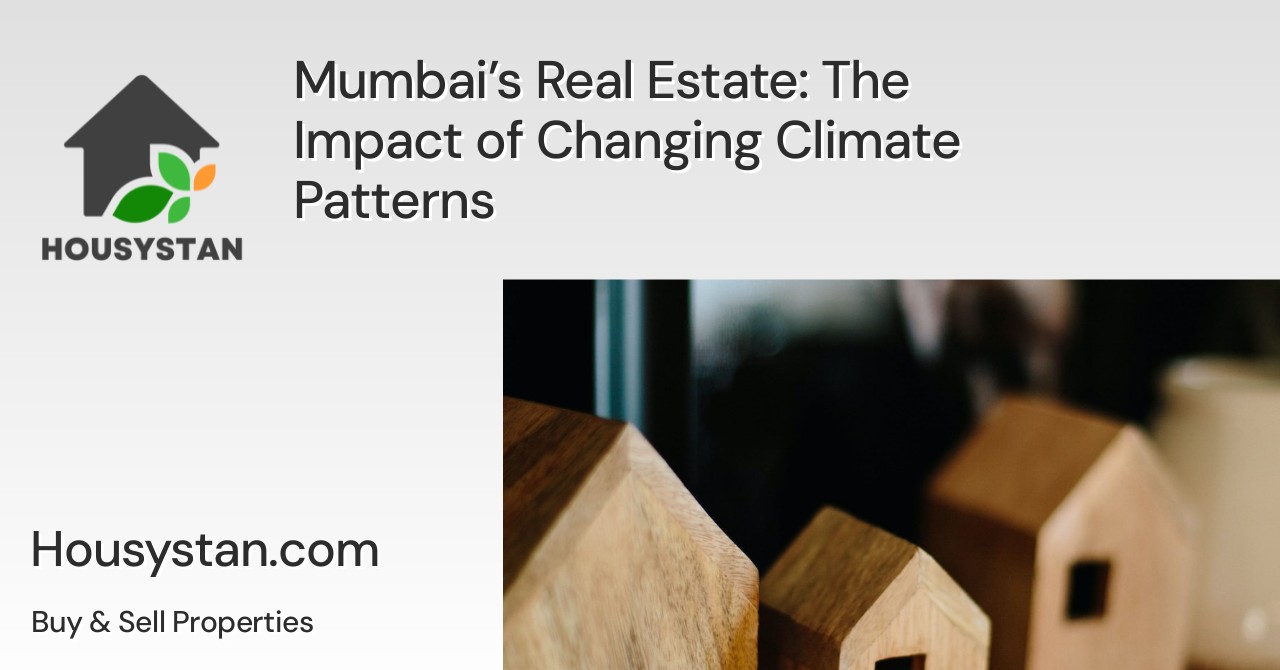Mumbai’s Real Estate: The Impact of Changing Climate Patterns
Read latest blogs and articles from Housystan

The Information mentioned here was last updated on:
9/1/2026Mumbai’s Real Estate: The Impact of Changing Climate Patterns
Mumbai, India’s bustling financial capital, stands at a critical juncture where climate change is influencing its real estate landscape. The city’s unique coastal location, dense population, and rapid urbanization make it particularly vulnerable to shifting weather conditions. As rainfall patterns grow unpredictable, sea levels rise, and temperatures fluctuate, property buyers, investors, and developers are reevaluating their strategies to adapt to new environmental realities. Understanding these changes is essential for anyone considering real estate transactions in Mumbai.
One of the most significant challenges facing Mumbai’s real estate market is the increased frequency and intensity of monsoons. Heavy rainfall leads to flooding in low-lying neighborhoods such as Kurla, Sion, and parts of Andheri, impacting both residential and commercial properties. Flood-prone zones often experience depreciation in property value due to the risk of water damage and disruption. As a result, buyers are prioritizing locations with superior drainage infrastructure and elevated terrain. Developers, in turn, are integrating flood-resistant features and sustainable materials into new constructions, ensuring long-term resilience and safety.
- Verified Tenants/Buyers
- Unlimited Property Listing
- Zero subscription/charges fee
Rising sea levels pose another concern for Mumbai’s coastal real estate. Popular areas like Worli, Juhu, and Bandra face increased erosion and the potential for storm surges, prompting a shift in demand toward inland localities such as Powai, Chembur, and Mulund. Investors are keen on projects with eco-friendly certifications and green building features, as these properties promise lower maintenance costs and higher sustainability. Moreover, government policies and urban planning initiatives are now focused on creating climate-adaptive infrastructure, including improved sewage systems and green spaces, to mitigate the impact of changing weather patterns.
Temperature changes also influence the market, as excessive heat drives demand for energy-efficient homes with modern cooling solutions. Builders are responding by adopting smart technology, efficient insulation, and renewable energy sources, catering to environmentally conscious buyers. Additionally, real estate agents emphasize the importance of proximity to public transportation and essential services, as accessibility becomes crucial during extreme weather events.
In conclusion, climate change is reshaping Mumbai’s real estate sector by altering buyer preferences, influencing development trends, and guiding investment strategies. Staying informed about local environmental risks and sustainable property options will help buyers, sellers, and investors make sound decisions in Mumbai’s evolving real estate market. For those seeking long-term value and security, adapting to climate realities is not just advisable—it is essential.